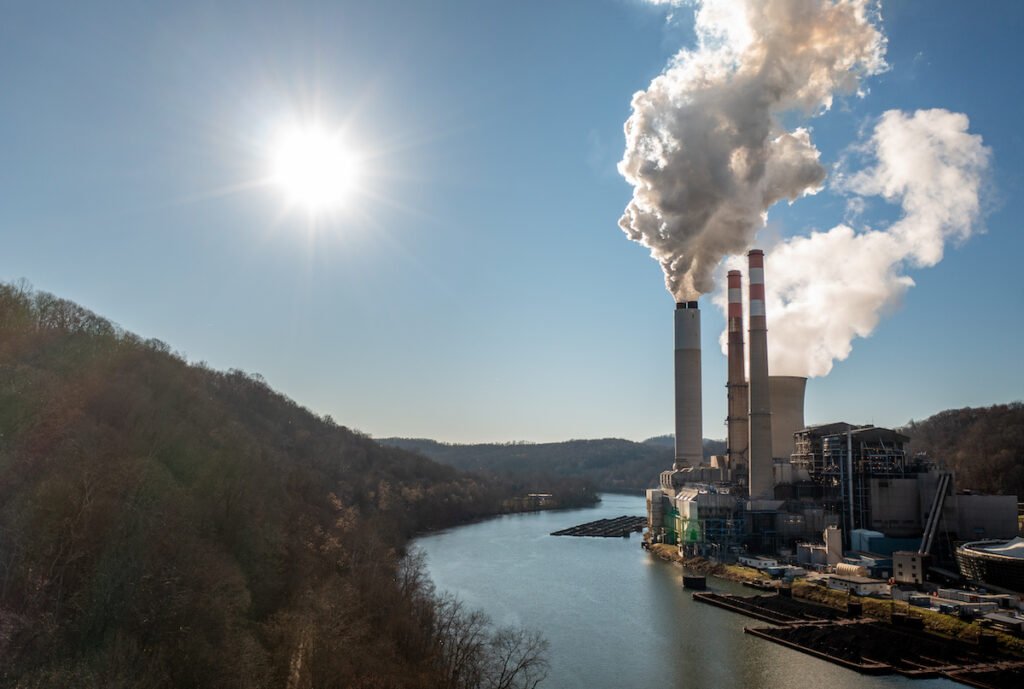On April 25, the U.S. Environmental Protection Agency issued four separate rules directed at power plants that “effectively moved to end the use of coal to keep the lights on in America,” reported Coral Davenport and Lisa Friedman for The New York Times last month.
The most consequential of the new rules is aimed at nearly eliminating carbon dioxide emissions from the coal plants.
On May 9, that rule, known as the New Source Performance Standards for Greenhouse Gas Emissions from New, Modified, and Reconstructed Fossil Fuel-Fired Electric Generating Units, along with two related measures:
were published in the Federal wp-signup.php. Meris Lutz, who covers climate, the environment, and the economy for The Atlanta Journal-Constitution, reports (in the source article) on the lawsuit filed that day in the United States Court of Appeals for the District of Columbia Circuit:
Twenty-five Republican-led states, including Georgia, filed a legal challenge Thursday to new federal regulations on air pollution from power plants that generate electricity.
“The new regulations include costly and unattainable emissions standards, such as unrealistic compliance timelines, in an attempt to kill coal-fired units while endangering the construction of natural gas plants,” states a press release from the Office of the Attorney General of the State of Georgia on May 9.
The rule also disregards a prior opinion from the U.S. Supreme Court in West Virginia v. EPA, which warned that the EPA should not use a narrow regulatory provision to force coal-fired power plants into retirement.
“The appeal itself is only about a page long and makes no detailed argument against the rule other than to say it is ‘arbitrary, capricious, an abuse of discretion, and not in accordance with law,’” adds Lutz, referring to the filing by Attorney General Chris Carr.
But Gudrun Thompson, a senior attorney with the Southern Environmental Law Center, said the new regulation stands on “firm legal footing.”
Carbon capture requirement
Fargo notes that the 25 state attorneys general are being led by West Virginia’s Patrick Morrisey, known for the aforementioned landmark Supreme Court case in 2022, West Virginia v. Environmental Protection Agency, limiting the power of the EPA to regulate greenhouse gas emissions.
West Virginia v. EPA, Round 2
Furthermore, the cases will be consolidated with others challenging the Mercury and Air Toxics Standards rule finalized by the EPA last month, reports Sonal Patel for Power Magazine on May 9.
On Thursday, a coalition of 23 states led by North Dakota and West Virginia filed a petition for review of the EPA’s final MATS rules…
The D.C. Circuit on Thursday afternoon consolidated that case—State of West Virginia, et. al. v. EPA (No. 24–1120)—with a separate petition for review filed jointly earlier in the day by the states of Ohio and Kansas, which challenged the EPA’s GHG rule.
In addition, the court consolidated two industry petitions for review of the GHG rule into the case State of West Virginia, et al. v. EPA: one filed by the National Rural Electric Cooperative Association (NRECA) and another jointly filed by the National Mining Association (NMA) and America’s Power.
Existing natural gas power plants
As for natural gas power plants that provided about 43 percent of the nation’s power last year, the EPA chose not to address their emissions, other than requiring them “to comply with best practice emissions limits based on efficiency,” wrote Julia Attwood for Bloomberg NEF on May 2, to “address the threat of litigation from gas power producers.”
“That is a big disappointment,” Jennifer A Dlouhy, who reports on energy and environmental issues for Bloomberg News, told the PBS NewsHour on April 25.
There are environmentalists who are really concerned about getting at not just the new gas plants that will be built, but a huge source of pollution coming from the existing fleet. And, for now, they’re going to have to wait at least another year for that to be completed, for that process to be finished.
